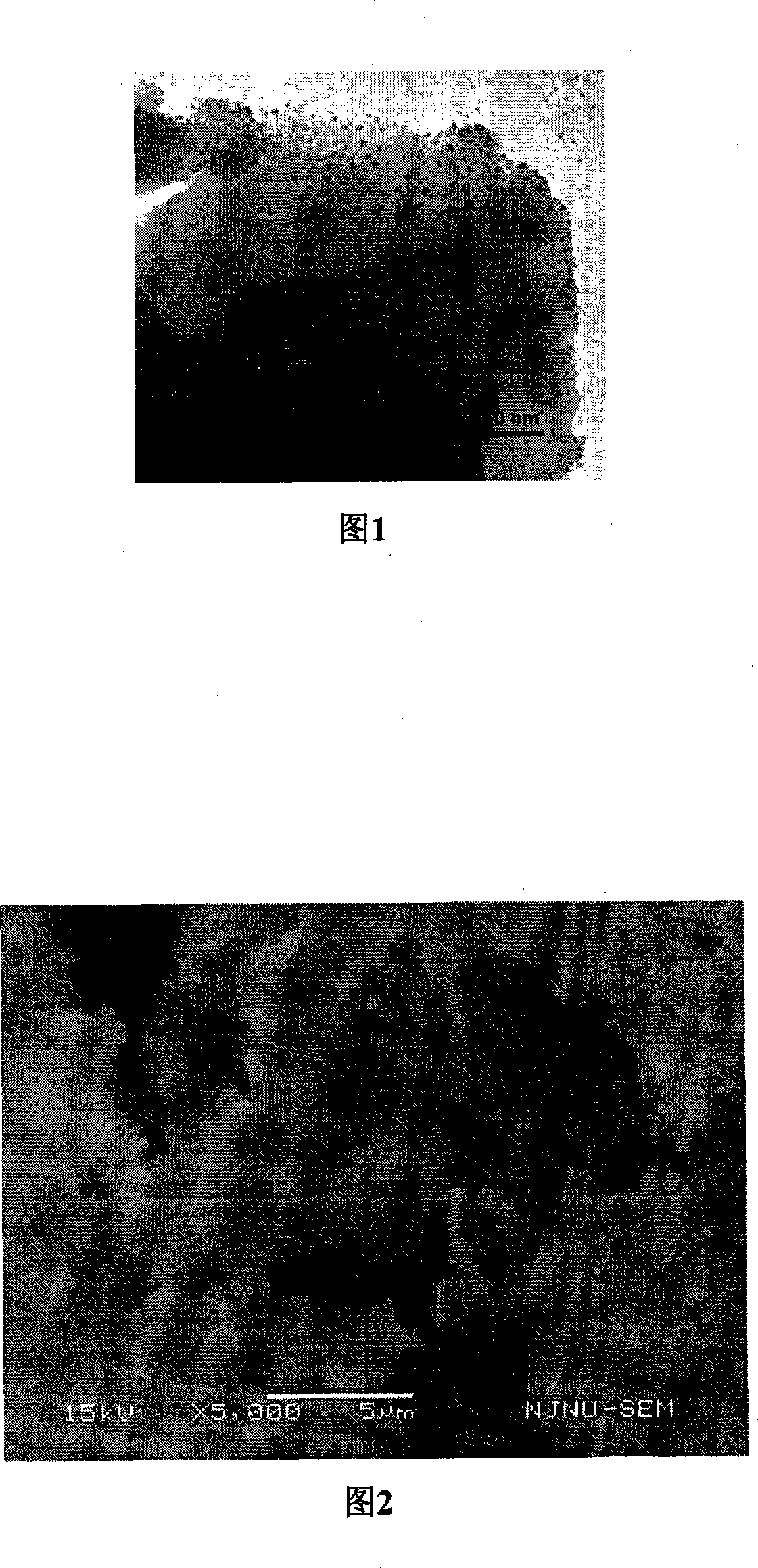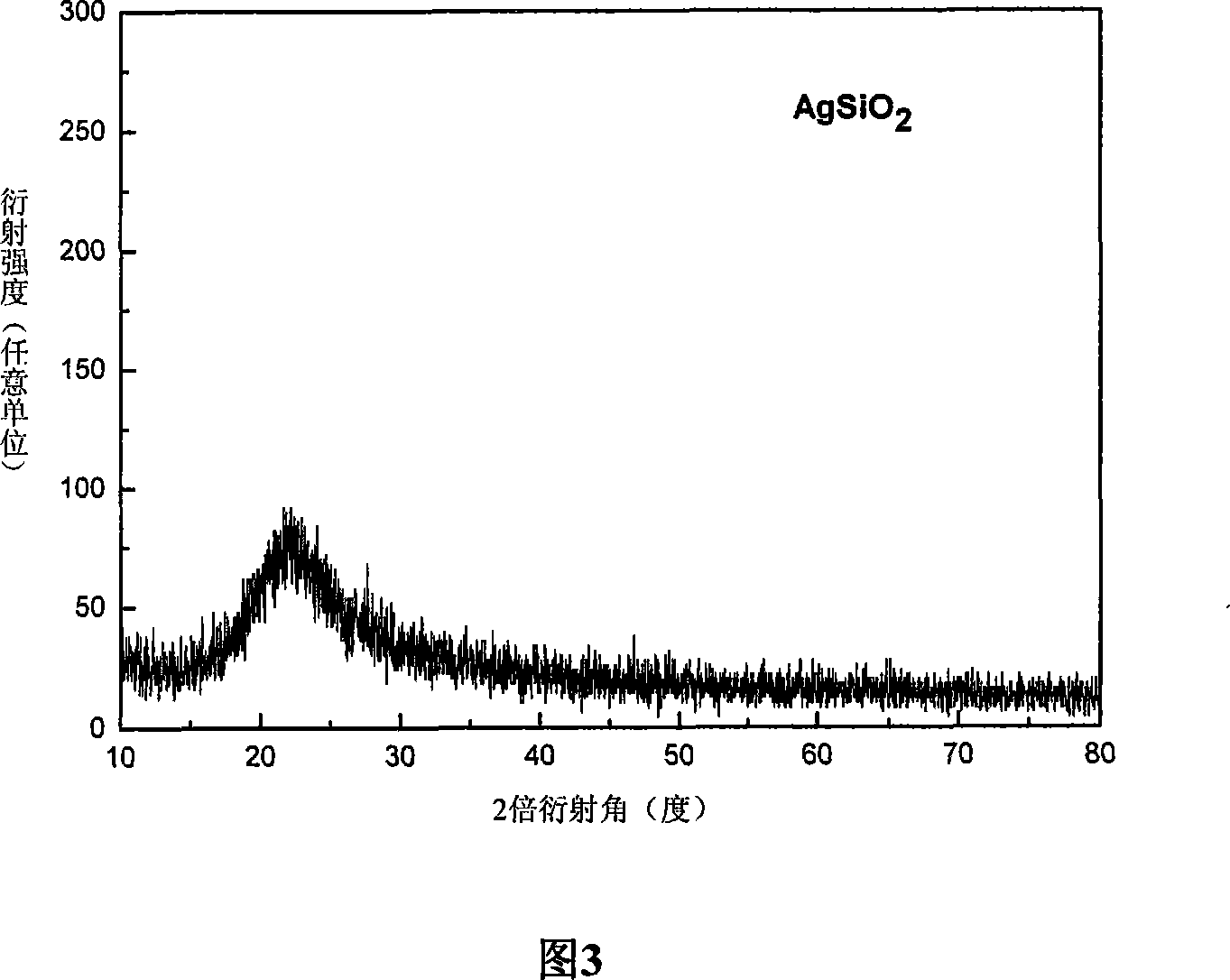SiO2 supported nanometer silver catalyst, preparing method and applications thereof
A silicon dioxide and catalyst technology, applied in metal/metal oxide/metal hydroxide catalysts, physical/chemical process catalysts, preparation of amino compounds, etc., can solve the problems of inconvenient transportation, difficult storage, environmental pollution, etc. Reduced catalyst cost, mild reaction conditions, improved production process effects
- Summary
- Abstract
- Description
- Claims
- Application Information
AI Technical Summary
Problems solved by technology
Method used
Image
Examples
specific Embodiment 1
[0022] In the stainless steel reactor of 100ml, add 0.5g p-chloronitrobenzene, 30ml ethanol and 0.05g catalyst (Ag loading capacity 4.0%), seal autoclave, fill H 2 Inflate to a pressure of 2.0MPa, then vent. Repeat the operation three times to remove the air in the kettle. Finally H 2 Charge to 2.0MPa, heat to 140°C, and react for 3.0 hours. During the reaction process, mechanical stirring was carried out at a speed of 900 revolutions per minute (900 r.p.m.). After the reaction was over, the reactor was naturally cooled to room temperature, and N 2 The gas is purged twice to remove the H in the kettle 2 . The catalyst was recovered from the reaction solution by centrifugation at a speed of 12000 r.p.m. The catalyst was washed three times with ethanol (3*5ml), and dried in vacuum at 60°C for recycling. The organic clear liquid was diluted with methanol and then analyzed and identified by GCMS-QP2010 (SHIMADZU) mass spectrometer. The results showed that the conversion rate...
specific Embodiment 2
[0023] In a 100ml stainless steel reaction kettle, add 0.5g p-chloronitrobenzene, 30ml ethanol and 0.10g catalyst (Ag loading capacity 1.0%), seal the autoclave, fill with H 2 Inflate to a pressure of 2.0MPa, then vent. Repeat the operation three times to remove the air in the kettle. Finally H 2 Charge to 3.0MPa, heat to 140°C, and react for 3.0 hours. During the reaction process, mechanical stirring was carried out at a speed of 900 revolutions per minute (900 r.p.m.). After the reaction was over, the reactor was naturally cooled to room temperature, and N 2 The gas is purged twice to remove the H in the kettle 2 . The catalyst was recovered from the reaction solution by centrifugation at a speed of 12000 r.p.m. The catalyst was washed three times with ethanol (3*5ml), and dried in vacuum at 60°C for recycling. The organic clear liquid was diluted with methanol and then analyzed and identified by GCMS-QP2010 (SHIMADZU) mass spectrometer. The results showed that the con...
specific Embodiment 3
[0024] In a 100ml stainless steel reaction kettle, add 0.5g p-chloronitrobenzene, 30ml ethanol and 0.05g catalyst (8.0% Ag loading), seal the autoclave, and fill with H 2 Inflate to a pressure of 2.0MPa, then vent. Repeat the operation three times to remove the air in the kettle. Finally H 2 Charge to 2.0MPa, heat to 140°C, and react for 3.0 hours. During the reaction process, mechanical stirring was carried out at a speed of 900 revolutions per minute (900 r.p.m.). After the reaction was over, the reactor was naturally cooled to room temperature, and N 2 The gas is purged twice to remove the H in the kettle 2 . The catalyst was recovered from the reaction solution by centrifugation at a speed of 12000 r.p.m. The catalyst was washed three times with ethanol (3*5ml), and dried in vacuum at 60°C for recycling. The organic clear liquid was diluted with methanol and then analyzed and identified by GCMS-QP2010 (SHIMADZU) mass spectrometer. The results showed that the conversi...
PUM
 Login to View More
Login to View More Abstract
Description
Claims
Application Information
 Login to View More
Login to View More - R&D
- Intellectual Property
- Life Sciences
- Materials
- Tech Scout
- Unparalleled Data Quality
- Higher Quality Content
- 60% Fewer Hallucinations
Browse by: Latest US Patents, China's latest patents, Technical Efficacy Thesaurus, Application Domain, Technology Topic, Popular Technical Reports.
© 2025 PatSnap. All rights reserved.Legal|Privacy policy|Modern Slavery Act Transparency Statement|Sitemap|About US| Contact US: help@patsnap.com


